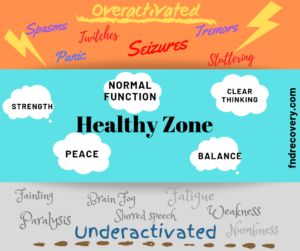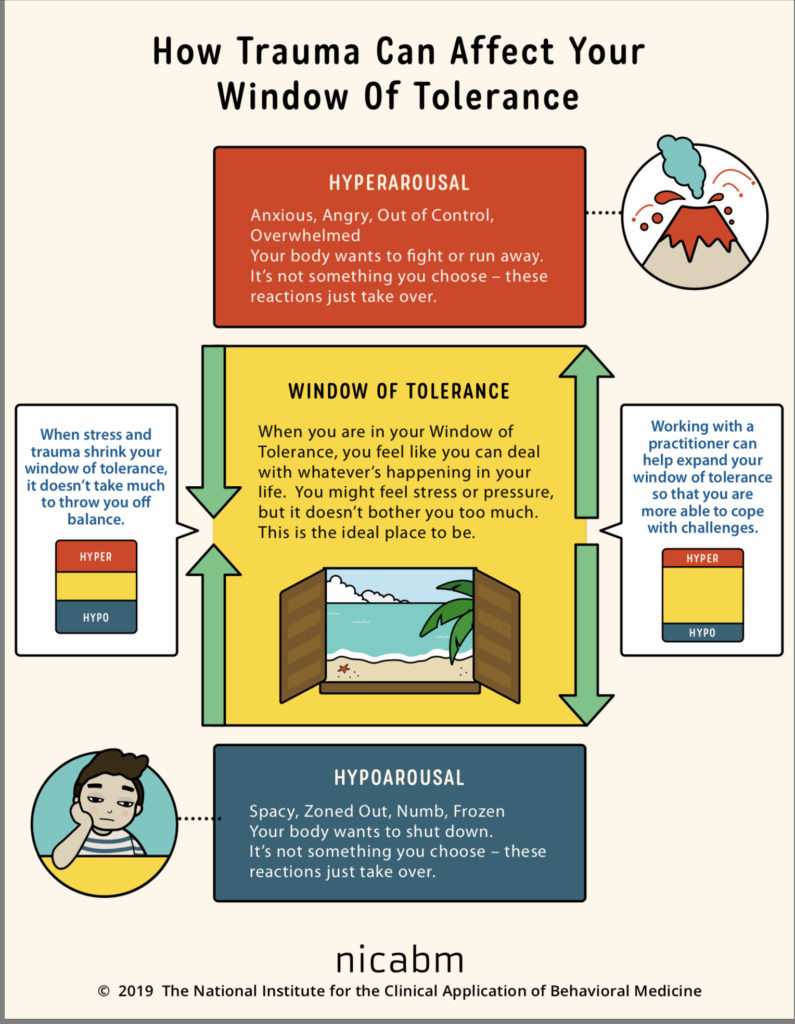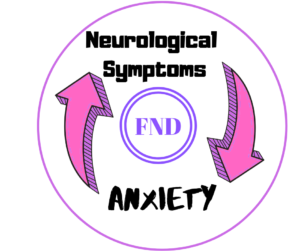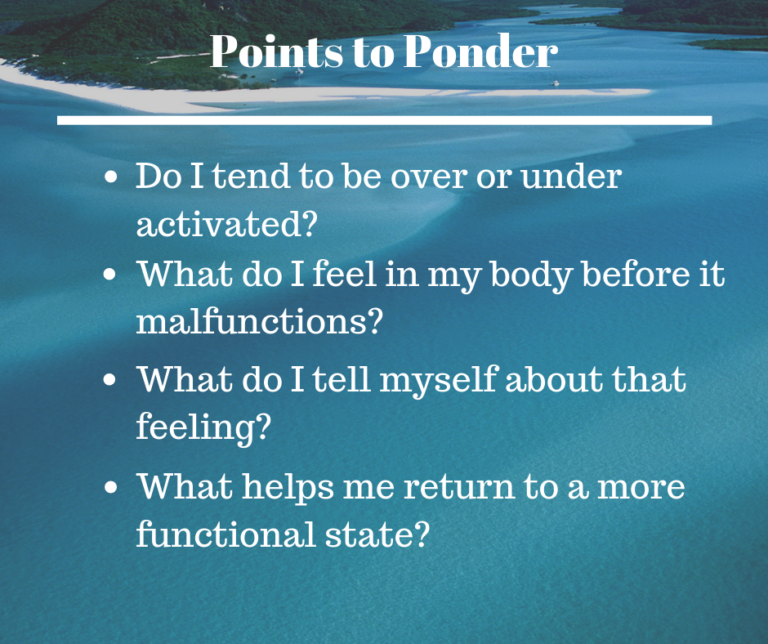
The Zone of Healthy Function
With Functional Neurological Disorder, the normal function of our nervous system gets derailed. Instead of the usual normal automatic movements most people take for granted, we end up either losing movement, such as paralysis or the ability to walk normally, or we begin having involuntary movements like seizures, tremors, or spasms. For many of us, the inconsistency of our symptoms is mind boggling. Why does my body work correctly some times and not others?
Recently I took an excellent online psychoeducation class called Project Seizure Free (now called FND Courage). The concepts I learned in the class line up very well with the discoveries I have made on my own. One term I hadn’t heard before is the “Window of Tolerance”, although I’m very familiar with the concept, which I think of as my “Healthy Function Zone”. When life throws me a curveball, I overextend myself, or allow stress to get the best of me, I can move out of that zone and my nervous system can begin to malfunction

The Window of Tolerance is the zone in which your nervous system is functioning at its best. You can become either over-activated (hyperarousal) or under-activated (hypoarousal) and move out of this healthy functioning zone.
The good news is that we can enlarge our Window of Tolerance as we build a healthier nervous system. Several years ago when I began to recover, I was very careful about allowing any unnecessary stress into my life. When I started driving again, I never attempted more than one errand a day. Even one outing would exhaust me for hours. With time, I’ve become able to do things I never would have thought possible 5 years ago. As we learn to manage our nervous systems, our healthy function zone widens and we are less susceptible to the factors that can lead to Functional Neurological Disorder symptoms. We become more tolerant to the the usual ups and downs of life.

Most of the time the problem I struggle with is over-activation. Too much to do, too much noise or other sensory stimulation, or feeling overwhelmed by an emotional issue all set my nervous system on overdrive. With time, I have learned to identify when I am moving towards that state and put the brakes on before I move out of my healthy functioning zone. Finding a quiet place to rest will usually help me calm down and feel better balanced. When I am expecting a lot of people at my home, I set up a quiet room. Once we had a family member visit for Thanksgiving who is on the autism spectrum. Both he and I appreciated the room I had set up with coloring books and other quiet activities. He chose to eat his meal in the quiet room, which sounded lovely to me, but since I was the hostess, I stuck it out with the rest of the family. After the meal, I took refuge with him away from the chaos.
When our bodies are in a constant state of stress, our Window of Tolerance can be a very narrow range, which causes symptoms to flare up more easily. With Functional Neurological Disorder, our symptoms can sometimes overwhelm us and increase our stress level. We can also enter a cycle of our symptoms causing anxiety, then the anxiety leads to more symptoms, then more anxiety, etc.. Anxiety may not be an issue for everyone with FND, but when it occurs, it really is a vicious cycle.

Last weekend I attended a conference in a less than ideal situation. Tables were crowded into a large room, each table hosting a different seminar. The room was unbelievably crowded and noisy. In the past, I would have run out of there the instant I saw the setup, but I really wanted to participate. I put in the earplugs that I always carry with me to reduce the volume of so many people talking at once, then started visualizing a clear bubble closing off our group from the rest of the room. When the noise level rose, I imagined adding layers of heavy drapes around the bubble and the noise being deadened by the layers. Visualizing the situation I would have preferred really helped my brain cope with the overstimulation. It’s so empowering when we realize we can control what goes on in our minds and use that to our advantage.
Another strategy I used to cope with the overwhelming situation was to take a few breaks and wander outside, enjoying the beautifully landscaped grounds. Since I know that nature is one of my best calming tools, I recognized that some time outside would not only help me escape the chaos for a little while, but also recharge me at the same time.
Calming activities like meditation, reading, and listening to quiet music can help us move from over-activation to the healthy zone. One of my favorite ways to soothe myself is in warm water. I love to swim and a little time in the pool is good for me in so many ways. The water is calming, my breathing becomes regular, the rhythmicity of my swimming stroke soothes me and uses cross-body movements that have been shown to be helpful in brain training. I think there is something primal about time spent in warm water- almost like a return to the womb and the warm amniotic fluid where we developed. If swimming isn’t your thing, a nice warm bath is also a great way to relax.

I hadn’t considered until recently that under-activation can also be a problem. In this state, our bodies shut down. We can feel paralyzed, dissociated, or in a fog. I think that I end up at this point when I have pushed too hard to the point of exhaustion, or other times when my body is low on energy due to factors like illness, headache, low blood sugar, or normal end of the day fatigue.
When we are under-activated, it can be helpful to do things that are more energizing. Having a snack or getting some exercise can help your brain perk up. Taking note of your surroundings and becoming truly present in the moment is important to move back into the healthy zone.
Learning to stay in the zone of healthy functioning has helped me to fully participate in life again. I’m rooting for you to reach the same goal!



No comment yet, add your voice below!